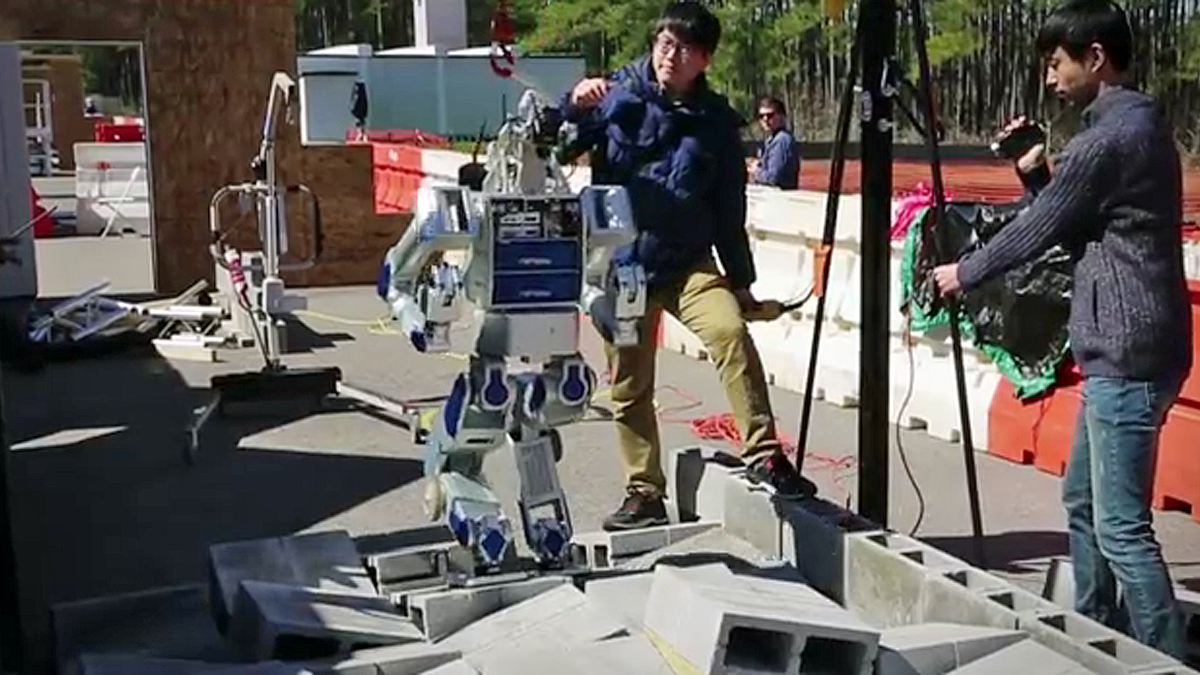Two Philadelphia-area teams to compete in DARPA robotics challenge

Just a day and a half before his robot has to show its mettle, Todd Danko of Lockheed Martin in Cherry Hill was still tinkering away.
“It’s stressful, and exciting,” he said, chuckling. “I think every team that you could talk to here would say that they would love to have another six months to prepare.”
Not far away, University of Pennsylvania graduate student Stephen McGill was anxious to begin testing his robot, a smaller machine designed to be highly modular.
“If the knee breaks you can move an elbow part right down and fix everything very quickly,” he said.
Both men are on teams among 25 finalists slated to compete in the Defense Advanced Research Projects Agency robotics challenge Friday and Saturday outside Los Angeles. The competition is the culmination of a two-year, government-sponsored effort to create technology that one day can be used in rescue operations.
When the World Trade Center towers fell, first responders risked their lives to save those trapped in the burning, crumbling buildings. During the Fukushima nuclear disaster, additional reactors exploded because radiation levels were too high to allow workers in to release critical valves.
But what if a robot could enter a nuclear power plant in an emergency or conduct search and rescue operations?
The aim is not a fully autonomous machine, but rather one that still works with people to perform dangerous missions. Even that lofty goal is still very far away, said Danko, the lead researcher for team Trooper, Lockheed Martin‘s collaboration with the University of Pennsylvania and Rensselaer Polytechnic Institute. But the DARPA competition intends to jump-start development.
In the challenge, each robot is faced with a series of tasks that must be completed within an hour, including driving, getting out of a car, walking through a doorway, turning a valve, moving over rubble, and climbing stairs. Teams don’t know the order, and at the end there will be surprise task to top it all off.
While many of these jobs are extremely easy for humans, for robots it’s another story.
Danko said his robot, Leo, for example, does very well walking, but might not be fast enough to complete all the events within the time limit. Leo is a 6-foot-3, 400-pound humanoid robot built by Boston Dynamics, courtesy of the government, for the competition. Several other teams also use the same basic hardware, but have taken different approaches to the software.
In contrast, the UCLA-Penn robot McGill helped construct with team Thor stands under 5 feet tall and weighs 120 pounds.
“We can be a little quicker to move, just because there’s a little less inertia on our robot,” he said.
Leo, too, might have his own moment of swiftness. Danko said he noticed his team seems to have taken a unique approach to getting the robot out of the utility vehicle.
“It’s definitely different than what we’re seeing from any other team here,” he said. “It’s perhaps a little risky. But if it works, it will be a lot faster than anyone else.”
In the trial competition back in December of 2013, team Thor scored eight points, and team Trooper, nine. The best performer netted 27 points, and was picked up by Google. The winner this time will take home the $2 million prize.
WHYY is your source for fact-based, in-depth journalism and information. As a nonprofit organization, we rely on financial support from readers like you. Please give today.

